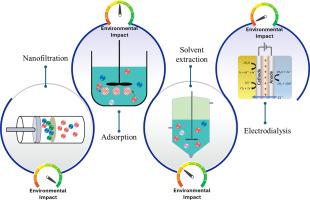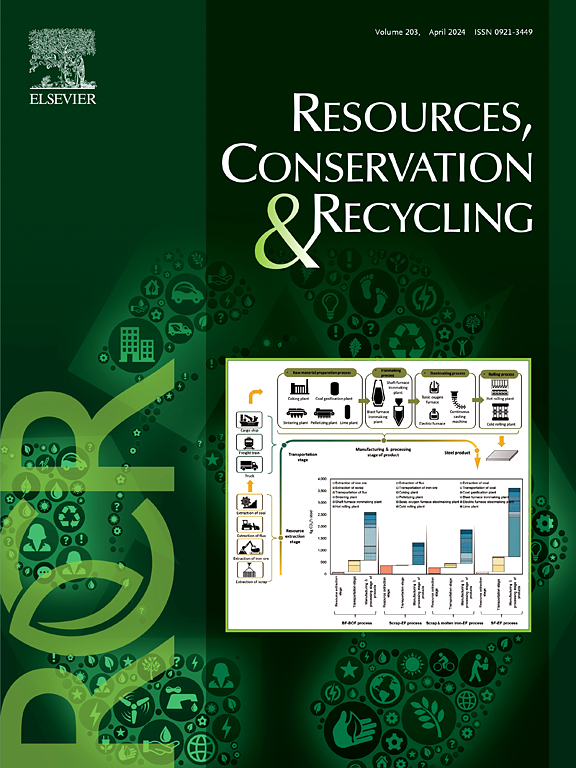Unlocking sustainable lithium: A comparative life cycle assessment of innovative extraction methods from brine
IF 11.2
1区 环境科学与生态学
Q1 ENGINEERING, ENVIRONMENTAL
引用次数: 0
Abstract
The surging demand for lithium, driven by the widespread adoption of electric vehicles and renewable energy storage systems, underscores the urgent need to develop sustainable lithium extraction methods. This study presents a comprehensive Life Cycle Assessment Using the TRACI method to evaluate and compare the environmental impacts of solvent extraction, adsorption, nanofiltration, and membrane electrolysis as direct lithium extraction methods for recovering lithium from brine to produce lithium carbonate. In terms of global warming, the carbon dioxide emission for each process was determined as follows: solvent extraction emits 52.7 kg CO2eq/kg of lithium carbonate, adsorption emits 47.9 CO2eq/kg of lithium carbonate, nanofiltration emits 17.7 kg CO2eq/kg of lithium carbonate, and membrane electrolysis emits 80.57 kg CO2eq/kg of lithium carbonate. As a result, the nanofiltration process emerges as the most environmentally friendly method, offering a promising solution to the environmental challenges of lithium extraction. In contrast, the membrane electrolysis process has the highest environmental impact.

开启可持续的锂:从卤水中提取锂的创新方法的生命周期比较评估
电动汽车和可再生能源存储系统的广泛应用推动了锂需求的激增,这凸显了开发可持续锂萃取方法的迫切性。本研究采用 TRACI 方法进行了全面的生命周期评估,对溶剂萃取法、吸附法、纳滤法和膜电解法作为直接锂萃取法从卤水中回收锂以生产碳酸锂的环境影响进行了评估和比较。就全球变暖而言,每种工艺的二氧化碳排放量如下:溶剂萃取每千克碳酸锂排放 52.7 千克二氧化碳当量,吸附每千克碳酸锂排放 47.9 千克二氧化碳当量,纳滤每千克碳酸锂排放 17.7 千克二氧化碳当量,膜电解每千克碳酸锂排放 80.57 千克二氧化碳当量。因此,纳滤工艺是最环保的方法,为解决锂提取过程中的环境挑战提供了一种可行的解决方案。相比之下,膜电解工艺对环境的影响最大。
本文章由计算机程序翻译,如有差异,请以英文原文为准。
求助全文
约1分钟内获得全文
求助全文
来源期刊

Resources Conservation and Recycling
环境科学-工程:环境
CiteScore
22.90
自引率
6.10%
发文量
625
审稿时长
23 days
期刊介绍:
The journal Resources, Conservation & Recycling welcomes contributions from research, which consider sustainable management and conservation of resources. The journal prioritizes understanding the transformation processes crucial for transitioning toward more sustainable production and consumption systems. It highlights technological, economic, institutional, and policy aspects related to specific resource management practices such as conservation, recycling, and resource substitution, as well as broader strategies like improving resource productivity and restructuring production and consumption patterns.
Contributions may address regional, national, or international scales and can range from individual resources or technologies to entire sectors or systems. Authors are encouraged to explore scientific and methodological issues alongside practical, environmental, and economic implications. However, manuscripts focusing solely on laboratory experiments without discussing their broader implications will not be considered for publication in the journal.
 求助内容:
求助内容: 应助结果提醒方式:
应助结果提醒方式:


